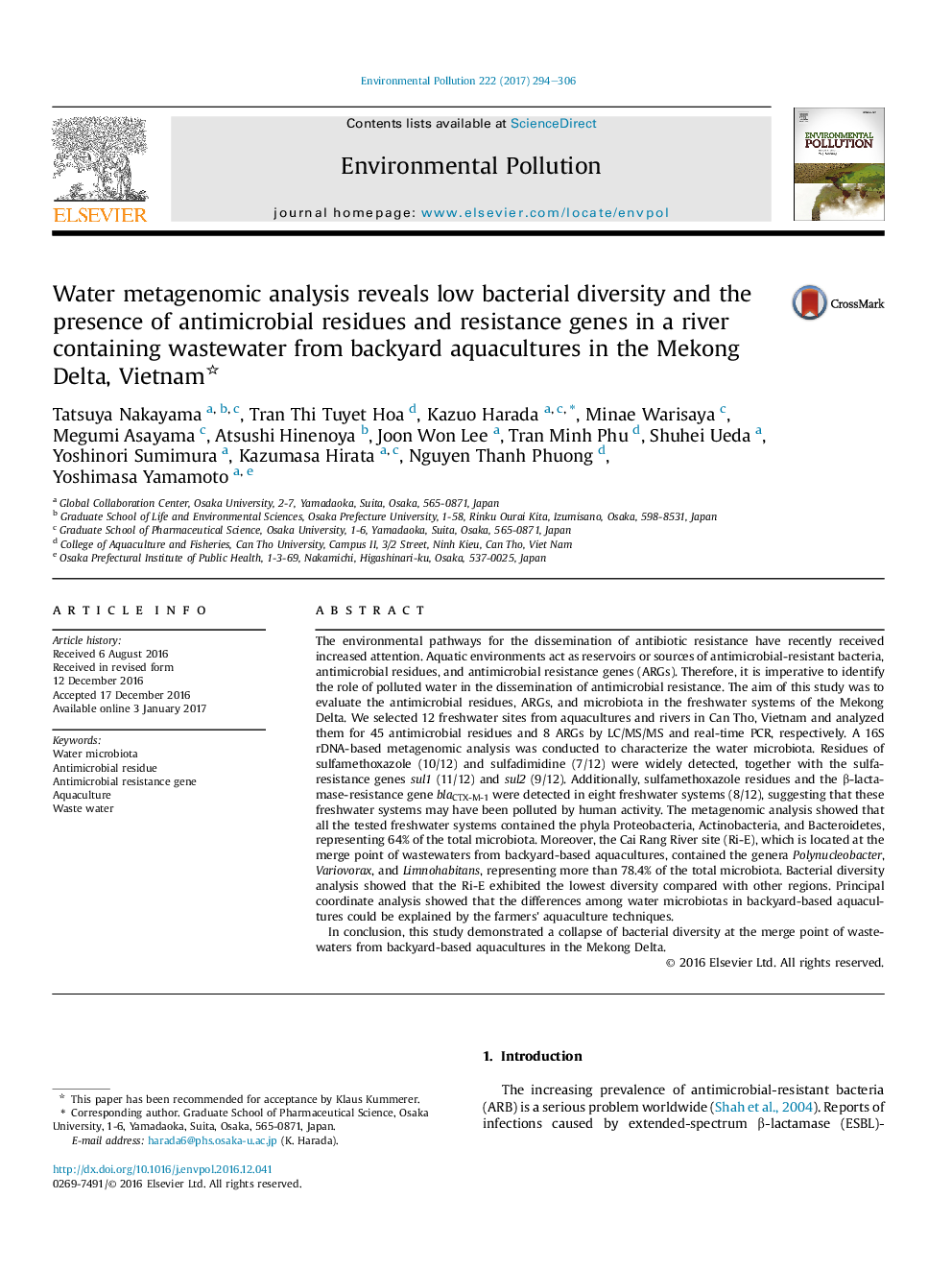| کد مقاله | کد نشریه | سال انتشار | مقاله انگلیسی | نسخه تمام متن |
|---|---|---|---|---|
| 5749023 | 1619151 | 2017 | 13 صفحه PDF | دانلود رایگان |

- SMX and SDD residues were widely detected with the sul1 sulfa-resistance gene.
- Nine out of twelve sites had blaCTX-M, blaTEM, and blaSHV.
- Wastewater merge point of backyard-based aquacultures (Ri-E) had low diversity.
- Three genera of Polynucleobacter, Varivorax and Limnohabitans predominated at Ri-E.
- Aquaculture management may affect the diversity of backyard-based aquaculture.
The environmental pathways for the dissemination of antibiotic resistance have recently received increased attention. Aquatic environments act as reservoirs or sources of antimicrobial-resistant bacteria, antimicrobial residues, and antimicrobial resistance genes (ARGs). Therefore, it is imperative to identify the role of polluted water in the dissemination of antimicrobial resistance. The aim of this study was to evaluate the antimicrobial residues, ARGs, and microbiota in the freshwater systems of the Mekong Delta. We selected 12 freshwater sites from aquacultures and rivers in Can Tho, Vietnam and analyzed them for 45 antimicrobial residues and 8 ARGs by LC/MS/MS and real-time PCR, respectively. A 16S rDNA-based metagenomic analysis was conducted to characterize the water microbiota. Residues of sulfamethoxazole (10/12) and sulfadimidine (7/12) were widely detected, together with the sulfa-resistance genes sul1 (11/12) and sul2 (9/12). Additionally, sulfamethoxazole residues and the β-lactamase-resistance gene blaCTX-M-1 were detected in eight freshwater systems (8/12), suggesting that these freshwater systems may have been polluted by human activity. The metagenomic analysis showed that all the tested freshwater systems contained the phyla Proteobacteria, Actinobacteria, and Bacteroidetes, representing 64% of the total microbiota. Moreover, the Cai Rang River site (Ri-E), which is located at the merge point of wastewaters from backyard-based aquacultures, contained the genera Polynucleobacter, Variovorax, and Limnohabitans, representing more than 78.4% of the total microbiota. Bacterial diversity analysis showed that the Ri-E exhibited the lowest diversity compared with other regions. Principal coordinate analysis showed that the differences among water microbiotas in backyard-based aquacultures could be explained by the farmers' aquaculture techniques.In conclusion, this study demonstrated a collapse of bacterial diversity at the merge point of wastewaters from backyard-based aquacultures in the Mekong Delta.
463
Journal: Environmental Pollution - Volume 222, March 2017, Pages 294-306